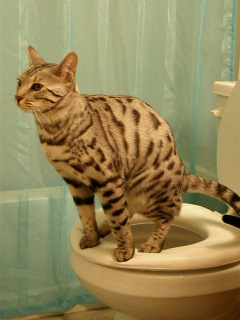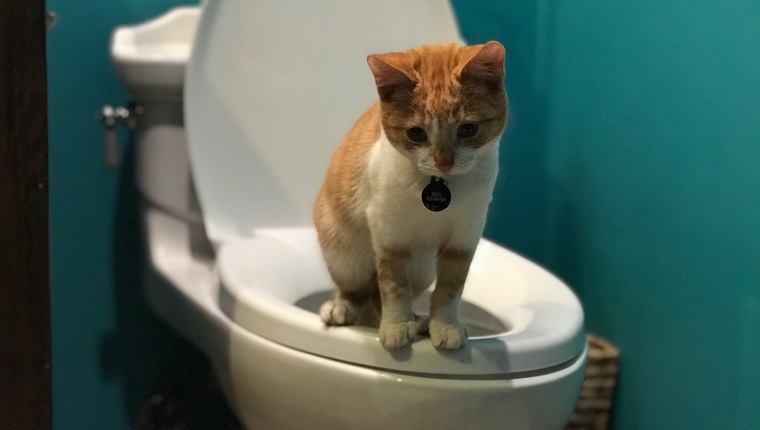Avoid Clogs and Damage: Don't Flush Cat Poop Down Your Toilet - Expert Insights
Avoid Clogs and Damage: Don't Flush Cat Poop Down Your Toilet - Expert Insights
Blog Article
The publisher is making several great annotation relating to Don’t flush cat feces down the toilet in general in this post beneath.

Intro
As cat owners, it's necessary to bear in mind just how we throw away our feline pals' waste. While it may appear hassle-free to flush cat poop down the commode, this method can have detrimental effects for both the environment and human health.
Alternatives to Flushing
Thankfully, there are safer and much more liable ways to get rid of feline poop. Consider the complying with alternatives:
1. Scoop and Dispose in Trash
One of the most common technique of dealing with feline poop is to scoop it right into a naturally degradable bag and toss it in the trash. Make sure to use a specialized clutter scoop and take care of the waste quickly.
2. Usage Biodegradable Litter
Opt for naturally degradable cat trash made from products such as corn or wheat. These litters are eco-friendly and can be securely dealt with in the garbage.
3. Hide in the Yard
If you have a yard, think about hiding cat waste in a designated location away from vegetable yards and water resources. Be sure to dig deep enough to avoid contamination of groundwater.
4. Mount a Pet Waste Disposal System
Invest in an animal garbage disposal system especially designed for feline waste. These systems make use of enzymes to break down the waste, reducing odor and environmental effect.
Wellness Risks
In addition to ecological issues, purging cat waste can additionally position health dangers to humans. Feline feces might include Toxoplasma gondii, a bloodsucker that can cause toxoplasmosis-- a possibly severe health problem, particularly for expecting females and individuals with weakened immune systems.
Ecological Impact
Flushing feline poop presents hazardous virus and parasites into the water, posing a considerable threat to aquatic ecosystems. These pollutants can adversely influence marine life and compromise water top quality.
Conclusion
Responsible family pet possession extends beyond supplying food and shelter-- it likewise includes correct waste management. By refraining from purging pet cat poop down the commode and opting for alternate disposal techniques, we can decrease our ecological footprint and secure human wellness.
Why Can’t I Flush Cat Poop?
It Spreads a Parasite
Cats are frequently infected with a parasite called toxoplasma gondii. The parasite causes an infection called toxoplasmosis. It is usually harmless to cats. The parasite only uses cat poop as a host for its eggs. Otherwise, the cat’s immune system usually keeps the infection at low enough levels to maintain its own health. But it does not stop the develop of eggs. These eggs are tiny and surprisingly tough. They may survive for a year before they begin to grow. But that’s the problem.
Our wastewater system is not designed to deal with toxoplasmosis eggs. Instead, most eggs will flush from your toilet into sewers and wastewater management plants. After the sewage is treated for many other harmful things in it, it is typically released into local rivers, lakes, or oceans. Here, the toxoplasmosis eggs can find new hosts, including starfish, crabs, otters, and many other wildlife. For many, this is a significant risk to their health. Toxoplasmosis can also end up infecting water sources that are important for agriculture, which means our deer, pigs, and sheep can get infected too.
Is There Risk to Humans?
There can be a risk to human life from flushing cat poop down the toilet. If you do so, the parasites from your cat’s poop can end up in shellfish, game animals, or livestock. If this meat is then served raw or undercooked, the people who eat it can get sick.
In fact, according to the CDC, 40 million people in the United States are infected with toxoplasma gondii. They get it from exposure to infected seafood, or from some kind of cat poop contamination, like drinking from a stream that is contaminated or touching anything that has come into contact with cat poop. That includes just cleaning a cat litter box.
Most people who get infected with these parasites will not develop any symptoms. However, for pregnant women or for those with compromised immune systems, the parasite can cause severe health problems.
How to Handle Cat Poop
The best way to handle cat poop is actually to clean the box more often. The eggs that the parasite sheds will not become active until one to five days after the cat poops. That means that if you clean daily, you’re much less likely to come into direct contact with infectious eggs.
That said, always dispose of cat poop in the garbage and not down the toilet. Wash your hands before and after you clean the litter box, and bring the bag of poop right outside to your garbage bins.
https://trenchlesssolutionsusa.com/why-cant-i-flush-cat-poop/

As an avid person who reads on Can You Flush Cat Poop Down The Toilet?, I think sharing that piece of writing was beneficial. Enjoyed reading our blog posting? Please share it. Let somebody else find it. Thanks for your time. Come back soon.
Book A Service Report this page